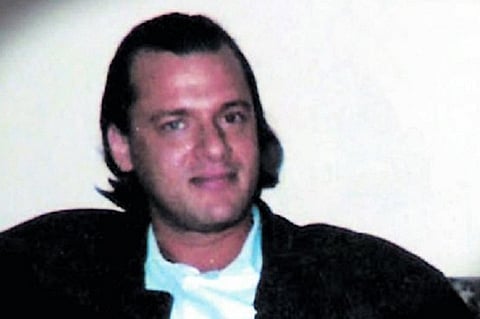

The second day of globally designated Lashkar-e-Taiba terrorist and US citizen David Coleman Headley's testimony continued for the second day on Tuesday.
Monday was the first time that a foreign terrorist is deposing before an Indian court via video conferencing.
"It is for the first time in the Indian legal history, one foreign terrorist would give his evidence through video link and his evidence will be recorded. And I feel his evidence is most useful because that may unfold many things behind the terror attack of 26 November," senior Public Prosecutor Ujjwal Nikam told ANI.
These are the some of the revelations made by Headley:
1. Lashkar was part of 26/11 conspiracy and he was a "true follower of LeT". Got inspired by JuD chief Hafiz Sayeed's speeches and joined LeT in 2002 at a training camp in Muzaffarabad. During the courses I attended at militant training camps, I met Zaki-ur-Rehman Lakhavi & Hafiz Saeed. During these courses, they also taught us that India is an enemy of Islam. I intended to go to Kashmir and fight Indian troops, but they did not allow me.
2. Major Ali introduced me to Major Iqbal of Pakistan ISI. I met Major Iqbal of ISI in Lahore in early 2006. He asked me to gather military intelligence from India and also try to recruit someone from the Indian military to spy. I told Major Iqbal that I would do as he asked. ISI provides "financial, military and moral support" to terror outfits LeT, Jaish-e-Mohammad and Hizbul Mujahideen. I was asked by LeT to track troop movement, locate defence locations and also recruit someone from the Indian military for spying.
3. In November, December 2007, the LeT held a meeting in Muzaffarabad, which was attended by (Headley's handler in the outfit) Sajid Mir and one Abu Kahsa. On the instructions of LeT handler Sajid Mir, he conducted a recce of vital installations in Mumbai and sent back videos.
4. LeT had planned to attack a proposed meeting of Indian defence scientists at the Taj Mahal Hotel in Mumbai and he was asked by Pakistan's ISI to recruit Indian armymen to spy for them. LeT group as a whole was responsible for the terror attacks in India, and it can be speculated that all orders came from its top commander Zaki-ur-Rehman Lakhvi. Despite ban, LeT still active through the United Jehadi Council.
5. Visited India at least seven times from Pakistan, either from Lahore or Karachi. Last visited India in March 2009. In November 2007, Headley met LeT top leaders when the proposed terror attacks on Mumbai were planned in Muzaffarabad in Pakistan Occupied Kashmir. Names former ISI chief Ahmed Shuja Pasha who helped him in terror operations.
6. Had a general idea about 26/11 plan. He drew maps, took video footage and scouted several targets for the attacks including the Taj Hotel, Oberoi Hotel and Nariman House. His reconnaissance provided vital information for the 10 LeT terrorists and their handlers, who launched the attack. LeT made two unsuccessful attempts to carry out terror attacks before finally striking in November 2008, once in September and another in October.
7. In January 2008, Headley’s wife Faiza complained to the US Embassy in Islamabad that he was involved in terrorist activities and was closely associated with LeT.
"After I got a new passport I disclosed it to my colleagues in LeT of which one of them was Sajid Mir, the person with whom I was dealing with. The objective for coming to India was to set up an office/business so that I can live in India. Before the first visit, Sajid Mir gave me instructions to make a general video of Mumbai,"
Indian prosecutors want Headley to confess details about the involvement of the Pakistani army, intelligence officials and Hafiz Saeed, the alleged mastermind of the 26/11 attacks.
These revelations would count as incontrovertible evidence against Pakistan’s claim of non-state actors being involved in the Mumbai attack.
According to media reports, top Mumbai Police and National Investigation Agency officials were also present in the court in addition to US Embassy officials.
This comes after a special TADA court in Mumbai allowed 54-year-old US citizen David Coleman Headley to be named as an accused in the 26/11 case in November last year.
Summons was initially issued to Headley to appear in court on December 10when he was pardoned.
"I pleaded guilty in the past to the charges in the US and I admitted I was a participant in these charges... I appear here ready to answer questions regarding these events, if I receive a pardon from this court." Headley had told the Mumbai court judge GA Sanap.
Headley was pardoned in the case as India failed to secure his extradition from the US.
The Mumbai police had then sought permission to write to the US Department of Justice. The Lashkar-e-Taiba operative has already been convicted in the 26/11 Mumbai attacks case to 35 years in prison by a US court for his role in terrorist activities in Denmark and India.
Headley had recced Mumbai before the attacks. He was convicted in the US for his role in the Mumbai attacks on January 24, 2013.
Prior to his arrest at Chicago airport in 2009 in relation to the 26/11 attacks, he used to be a double-agent for the Pakistani and US intelligence agencies and enjoyed protection from the US authorities as he was regarded as a ‘prized asset’.
The 26/11 attacks claimed a total of 166 lives and injured 300.